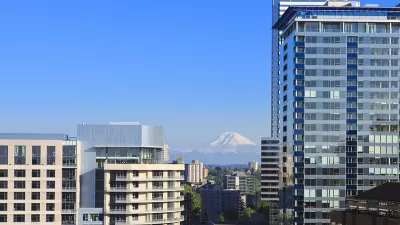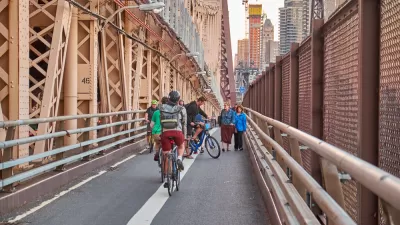To what degree are people's location decisions dictated by their consumer preferences? Jordan Weissmann of Slate Magazine discusses whether living in an expensive city like New York City is a consumption choice.
New York City is one of the most expensive cities in the United States. Affluent families living in the city sometimes consider themselves middle class due to the high cost of living. However, using Census Bureau data, Weissmann found that the overall income distribution in New York City, “is surprisingly similar to that of the United States writ large. For instance, in the U.S., about 22 percent of households earn at least $100,000 in a year. Across the five boroughs, it’s 25 percent; nationwide, just 4.6 percent of households earn at least $200,000, while in NYC, 6.9 percent hit that mark.”
According to Weissmann, some people argue, “that living in an expensive city like New York is a “consumption choice”—just like buying a fancy car or adding a pool into your backyard... [However,] people are drawn to cities that offer career opportunities and are tied to them by personal relationships that they can’t just pick up and move if they want a cheaper home... That said, choosing an especially expensive neighborhood in the city you call home is mostly a consumption decision. You might think that living within walking distance of a pretty park or a yoga studio is essential to your mental health, but in the end those are amenities, and enjoying them, along with all the other benefits of living in New York City, is a luxury.”
Indeed, neighborhood choice as a consumption decision is illuminated when Weissmann charts the income distributions of the five unique boroughs of New York City. Manhattan has a high skew of 17 percent of residents earning $200,000 or more annually, compared with only 4.6 percent nationwide, while the park-poor Bronx neighborhood only has 1.4 percent of residents earning such high salaries.
FULL STORY: Is Living in an Expensive City a “Consumption Choice,” Just Like Buying a Fancy Car?

Alabama: Trump Terminates Settlements for Black Communities Harmed By Raw Sewage
Trump deemed the landmark civil rights agreement “illegal DEI and environmental justice policy.”

Planetizen Federal Action Tracker
A weekly monitor of how Trump’s orders and actions are impacting planners and planning in America.

The 120 Year Old Tiny Home Villages That Sheltered San Francisco’s Earthquake Refugees
More than a century ago, San Francisco mobilized to house thousands of residents displaced by the 1906 earthquake. Could their strategy offer a model for the present?

In Both Crashes and Crime, Public Transportation is Far Safer than Driving
Contrary to popular assumptions, public transportation has far lower crash and crime rates than automobile travel. For safer communities, improve and encourage transit travel.

Report: Zoning Reforms Should Complement Nashville’s Ambitious Transit Plan
Without reform, restrictive zoning codes will limit the impact of the city’s planned transit expansion and could exclude some of the residents who depend on transit the most.

Judge Orders Release of Frozen IRA, IIJA Funding
The decision is a victory for environmental groups who charged that freezing funds for critical infrastructure and disaster response programs caused “real and irreparable harm” to communities.
Urban Design for Planners 1: Software Tools
This six-course series explores essential urban design concepts using open source software and equips planners with the tools they need to participate fully in the urban design process.
Planning for Universal Design
Learn the tools for implementing Universal Design in planning regulations.
Clanton & Associates, Inc.
Jessamine County Fiscal Court
Institute for Housing and Urban Development Studies (IHS)
City of Grandview
Harvard GSD Executive Education
Toledo-Lucas County Plan Commissions
Salt Lake City
NYU Wagner Graduate School of Public Service





























